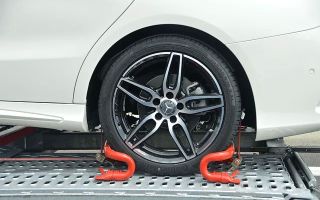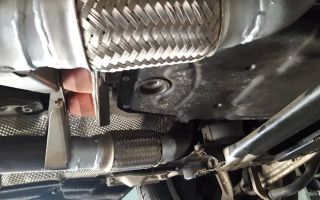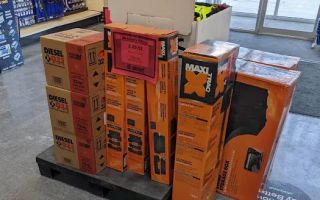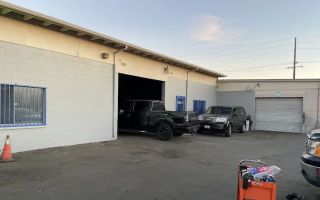What to Do When Your Vehicle Stalls in High-Traffic Areas
- 1. Remain Calm and Assess the Situation
- 2. Move to a Safe Location if Possible
- 3. Contact Roadside Assistance or a Tow Service
- 4. Prevent Further Hazards and Protect Yourself
- 5. Real-Life Case: A Personal Experience with a Stalled Vehicle
- 6. Be Prepared for Future Car Breakdowns
1. Remain Calm and Assess the Situation
When your vehicle stalls unexpectedly in high-traffic areas, it can be one of the most stressful situations. I’ve been in this situation before, and my first piece of advice is to stay calm. Panicking only adds to the stress and can make it harder to think clearly. The first thing I do is assess the situation: Is the car still in gear? Are the hazard lights functioning? Is there heavy traffic or a dangerous turn up ahead? Take a deep breath, focus on these initial checks, and mentally prepare yourself for what needs to happen next.
Next, I check if the engine completely shut down or if it’s idling. In my case, I learned that some stalling issues can be solved by quickly restarting the engine, so it's worth trying that before moving to the next steps. However, if the car doesn’t restart, or if there's no sign of life from the engine, I know it's time to take further action.
2. Move to a Safe Location if Possible
If the vehicle is still operational, my immediate goal is to move it out of the way of traffic. Depending on where the vehicle stops, I’ll try to coast to a safe area, such as the shoulder of the road or an empty parking lot nearby. This is critical for both my safety and the safety of other drivers. If the car is stuck in the middle of a busy road and there’s no way to move it, I make sure to leave the vehicle and head to a safe area.
Even if the car starts to stall in a low-traffic area, it’s a good idea to move it to a more secure spot if possible. I once had to shift my car in heavy traffic, and I found that staying calm and focused made all the difference in moving my vehicle safely. If the car is stuck and can’t move, I make sure to put the car in park and engage the handbrake to prevent any further issues.
3. Contact Roadside Assistance or a Tow Service
If you can’t restart your vehicle or move it out of the way, it’s time to call for help. Depending on the situation, I reach out to roadside assistance or a towing service. These services are invaluable when your vehicle breaks down in traffic. I always keep a towing service or roadside assistance number handy. There’s no reason to try to fix a stalled car in the middle of a high-traffic situation unless you’re absolutely sure it’s safe to do so.
In one instance, when my car stalled on a busy highway, I called my roadside assistance service. The professional came out, assessed the situation, and safely towed the car to a nearby garage. Having access to such services meant I didn’t have to worry about additional risks or delays in getting my car back on the road.
4. Prevent Further Hazards and Protect Yourself
In the event that your vehicle stalls in a high-traffic area, it’s essential to prevent any additional hazards. For starters, I make sure to turn on my hazard lights immediately. This simple action alerts other drivers that my vehicle is stationary, giving them a chance to adjust their speed or lane position. If the vehicle is in a dangerous spot, I try to keep the doors locked and avoid standing outside in the road. If it’s safe, I step out of the car and stand behind the guardrail or far away from traffic while waiting for help.
During one particular breakdown, I noticed that vehicles speeding by could easily cause a dangerous situation. So, I carefully stepped out, stood behind my car for protection, and made sure no one attempted to overtake me too closely. It’s a scary moment, but keeping safety in mind can make all the difference in preventing accidents.
5. Real-Life Case: A Personal Experience with a Stalled Vehicle
Let me share a personal experience where I learned the hard way about vehicle stalls in high-traffic areas. I was driving during rush hour when my car suddenly lost power, right in the middle of a busy intersection. The panic I felt was immediate, but I remembered to stay calm, put on my hazard lights, and attempted to restart the car. When that didn’t work, I had no choice but to call for roadside assistance.
The assistance arrived within 20 minutes, but during that time, the traffic had built up. I was lucky that the staff knew exactly how to help me and safely towed my car to the nearest service station. I learned a few important lessons from that experience: always have roadside assistance information readily available, don’t panic, and if possible, get the car to a safer spot away from heavy traffic.
6. Be Prepared for Future Car Breakdowns
From that experience, I realized that preparation is key. Since then, I’ve made sure to have an emergency kit in my car that includes basic tools, a flashlight, and my roadside assistance contact information. I also recommend keeping a small charger for your phone and a few non-perishable snacks in the car in case you’re stuck for a while. Knowing that I’m ready for any situation gives me peace of mind during every drive.
In addition to roadside assistance, it’s wise to regularly maintain your vehicle to reduce the chances of stalling or breakdowns. Keeping your car in good condition can significantly lower the risk of sudden problems, especially when driving in high-traffic areas. Routine checks, such as inspecting the battery, tires, and oil levels, can prevent unexpected stalls.
If you’re looking for a reliable roadside assistance or towing service, consider contacting Rescue & Towing. They offer fast, professional service to get you back on the road quickly and safely, ensuring your peace of mind in those stressful moments when your vehicle stalls.




























